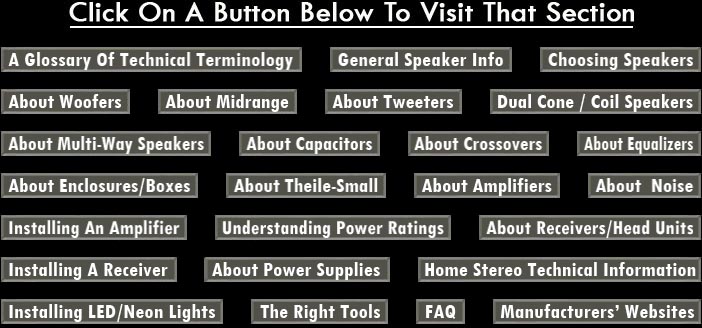


Ultrasonic
Having frequencies above the range of human hearing, commonly considered to be 20 kHz. Not to be confused with "supersonic," which means faster than the speed of sound. Ultrasonic frequencies in the signal path can sometimes cause harmonic distortion in audio components that are in the human hearing range and quite audible.
Unfused Wire
Any section of wire between the power supply and a load that does not include the protection of a fuse or circuit breaker.
Unison
In music, unison is used to describe an identity of pitch. When two or more tones are sounding at the same frequency or pitch, they are said to be in unison with one another.
Unity Gain
A device or setting which does not change signal level, neither amplifying nor attenuating the signal, is said to be at "unity gain." Many processors are set up for unity gain; that is, they can be plugged into a system without changing its overall levels. In practice, unity gain is often a desired setting for maintaining gain staging, and for optimizing operating levels and signal to noise ratios.
Unloading
The tendency of an enclosure to produce no spring or pressure on the woofer. Unloading produces an uncontrollable over-excursion of the woofer cone (it vibrates out of control); the speaker will exhibit inadequate power handling at lower frequencies.
Used Equipment
Purchasing used equipment must be done with great care, especially in the case of speakers. An inspection of a speaker's voice coil would certainly reveal if it had been severly burned by exposure to clipping distortion. Unfortunately this could only be done by effectively destroying the speaker; obviously, not very practical. Observe if you can, what music the owner prefers, and how it is listened to. If speakers are consistently played with the amplifier volume set at more than half its range, on loud, bass-heavy passages, it might be wise to consider the destructive cumulative effects of clipping distortion and other such stress.
The same caution applies little less rigorously to amplifiers, but not at all to signal source equipment (CD's, receivers, and Cassettes, etc.) and preamps, processors, etc. which are relatively impervious to high amplitude signals.















